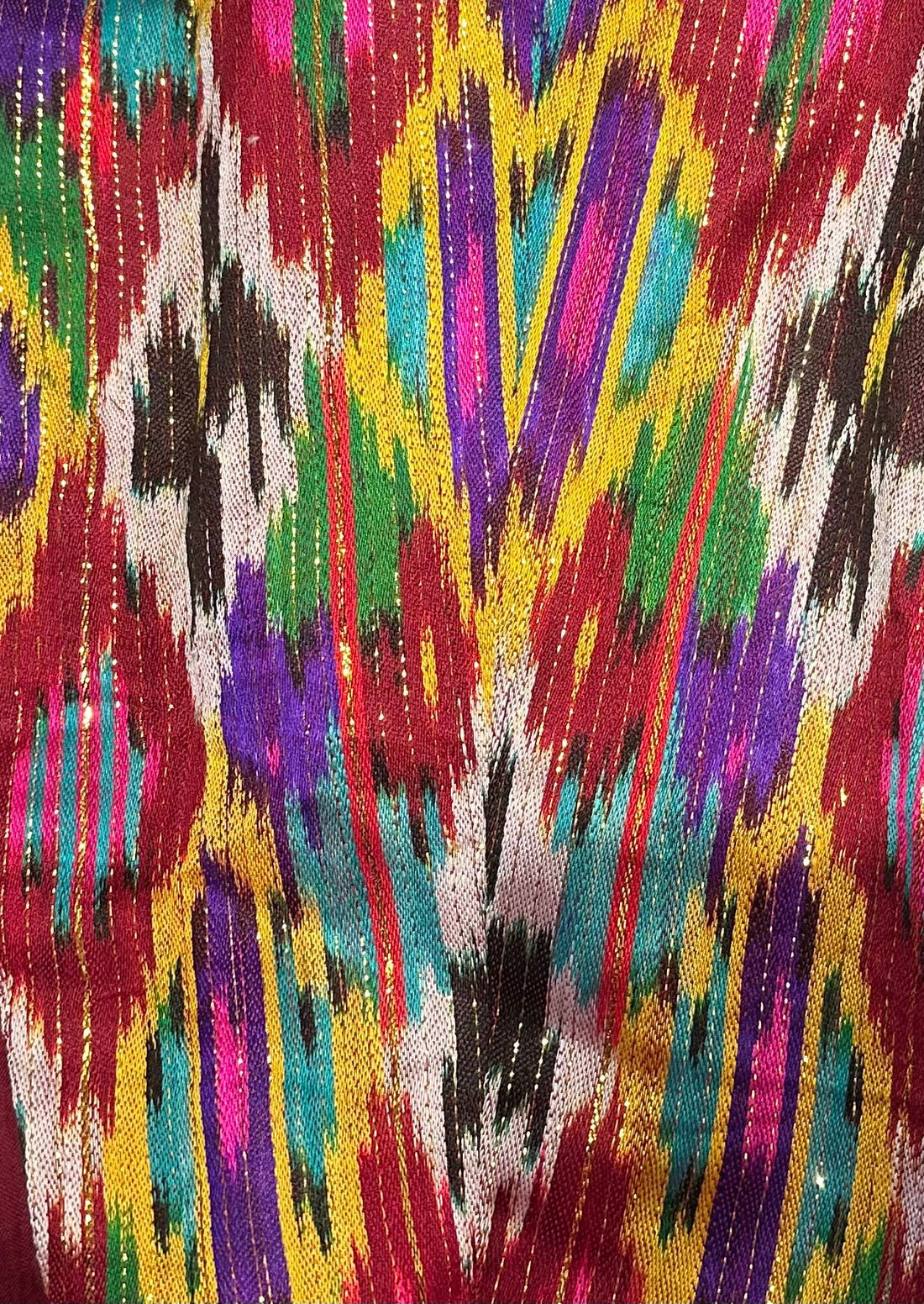
Ikat: Paintings in Threads
Imagine wrapping yourself in a story. Not a written one, but a tale told through vibrant threads and intricate patterns—that’s Ikat for you. It’s not just fabric; it’s an adventure, a splash of color, and a piece of history all rolled into one. Whether it’s a dress, a cushion, or even a scarf, Ikat lets you wear art and carry culture.
What is Ikat?
Let’s break it down: Ikat comes from the word “mengikat” in Malay-Indonesian, which means "to tie." And that’s exactly what artisans do—they tie and dye threads before they even start weaving. Yes, you heard that right! The patterns are planned and dyed into the threads first, and then the magic happens on the loom. The result? A fabric where the patterns look like they’re floating—kind of like an optical illusion, but softer.
The Intricate Process of Ikat Weaving
Creating Ikat is no walk in the park. Picture this: an artisan sits down with bundles of plain threads and a dream. They plan the pattern like a painter sketches a masterpiece. Then, using strings or wax, they tie parts of the threads to resist the dye—kind of like tie-dye’s cooler, more intricate cousin. After dyeing and untying (sometimes multiple times for different colors), the threads are ready to hit the loom. The weaving itself is like putting together a jigsaw puzzle where every piece has to fit perfectly. Mess up one thread, and the whole pattern shifts. It’s a labor of love—and a lot of patience.
The Journey of Ikat: A Tale of Origins and Travels
So, where did Ikat come from? It all started in Southeast Asia, where people first figured out this brilliant tie-and-dye technique. From there, it took off like a global road trip. It made a big splash in India, where artisans in Gujarat and Andhra Pradesh turned it into something extraordinary. They added vibrant colors and local motifs, and voilà—Patola and Pochampally Ikats were born.
Then came the Silk Road, and Ikat hitched a ride to Uzbekistan. Over there, it got a luxury upgrade with silk threads and dreamy, cloud-like designs. The royals loved it—because, let’s face it, who wouldn’t want to wear something so fabulous?
But the story doesn’t end there. Ikat kept traveling, reaching Guatemala, where it’s called "jaspe" and comes in bold geometric patterns, and Japan, where "kasuri" is all about subtlety with indigo hues. Each place made Ikat its own, adding a little local flavor to the mix.
Global Heritage
Now let’s take a quick world tour of Ikat styles:
India: Bright, bold, and beautiful. Think reds, yellows, and greens dancing across the fabric. Designers like Anita Dongre have taken these patterns to the runway.
Indonesia: Earthy tones and nature-inspired patterns that feel like a walk through the rainforest. Oscar Lawalata has even turned them into couture.
Uzbekistan: Jewel tones and silk threads that scream opulence. Brands like Dries Van Noten have borrowed these designs for high fashion.
Guatemala: Bright, happy colors in geometric patterns. Perfect for bringing a little fiesta to your wardrobe.
Japan: Subtle and refined. Think indigo blues and minimalist designs that feel like a Zen garden.
The Versatile Uses of Ikat
Okay, so we know Ikat is gorgeous, but where can you use it? The answer: pretty much everywhere!
- Apparel: Dresses, skirts, blouses, and even blazers—Ikat turns every outfit into a statement piece. It’s like wearable art.
- Home Décor: Think cushions, curtains, and table runners that add a pop of character to any room.
- Accessories: Handbags, scarves, and even shoes. Why stop at clothes when you can carry Ikat with you?
- Art Pieces: Some Ikat fabrics are so stunning they’re framed as art. Yes, really.
- Gifts: Notebooks, gift wraps, or little pouches—Ikat makes everything feel extra special.
These days, Ikat is having a major moment. Big-name designers like Tory Burch and Diane von Furstenberg are all about those bold patterns. It’s the perfect mix of traditional and trendy, making it a favorite for anyone who wants to stand out and stay sustainable.
Ikat isn’t just fabric; it’s a connection—to art, culture, and history. Whether you’re wearing it, decorating your home with it, or gifting it, Ikat brings a little piece of the world into your life. So go ahead, add some Ikat to your collection, and let it tell its story—because every thread has a tale to share.
